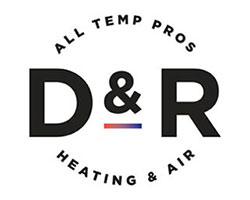When the weather starts to cool off, you are probably thinking about how you’ll prepare your heating and cooling. After all, HVAC bills routinely contribute a large portion of your monthly electric bill. To learn new ways to save, some owners look closer at their thermostat. Is there a setting they could use to boost efficiency?
The bulk of thermostats have a ‘Fan’ or ‘Fan On’ setting. But if the fan is running during a normal cycle, what will the fan setting provide for an HVAC system? This guide can help. We’ll review just what the fan setting is and how you can use it to save money over the summer or winter.
How Do I Access the Fan Setting on My Thermostat?
For the bulk of thermostats, the fan setting indicates that the system’s blower fan remains on. A few furnaces can run at a low level with this setting, but for the most part heating or cooling isn’t being generated. The ‘Auto’ setting, on the other hand, will turn on the fan over a heating or cooling cycle and switch it off after the cycle is finished.
There are advantages and disadvantages to using the fan setting on your thermostat, and the ideal option {will|can|should]] depend on your personal comfort requirements.
Advantages to switching to the Fan/On setting:
- You can keep the temperature in each room more uniform by permitting the fan to keep running.
- Indoor air quality will be highest because steady airflow will keep moving airborne particles through the air filter.
- A smaller amount of start-stop cycles for the system’s fan helps lengthen its life span. Since the air handler is usually part of the furnace, this means you might avoid needing furnace repair.
Downsides to using the Fan/On setting:
- A nonstop fan can raise your energy costs by a small margin.
- Constant airflow may clog your air filter up more quickly, increasing the frequency you will want to replace it.
{Choosing Between|Should My Thermostat Be on|Which Setting for My Thermostat? Fan or Auto in Each Season
Through the summer, warm air may linger in unfinished spaces including the attic or an attached garage. If you leave the fan on, your HVAC system might gradually move this warm air into the rest of your home, compelling the HVAC system to run longer to preserve the set temperature. In severe heat, this could result in needing AC repair more often as wear and tear grows.
The reverse can occur during the winter. Cooler spaces like a basement will hold onto cooler air, which will eventually make its way into the rest of your home. Keeping the fan on will sometimes draw more cold air upward, increasing the amount of heating you need to stay warm.
If you’re still trying to figure out if you should try the fan/on setting, keep in mind that every home and family’s comfort needs are not the same. Leaving the HVAC system’s fan on might be best for you if:
Someone in your household deals with allergies. Allergies and similar respiratory conditions can be hard on the family. Leaving the fan on can help to increase indoor air quality, helping your family breathe easier.
Your home deals with hot and cold spots. Lots of homes wrestle with stubborn hot and cold spots that quickly evolve to a temperature different from the rest of the house. The fan setting might help minimize these changes by steadily refreshing each room’s supply of air.
